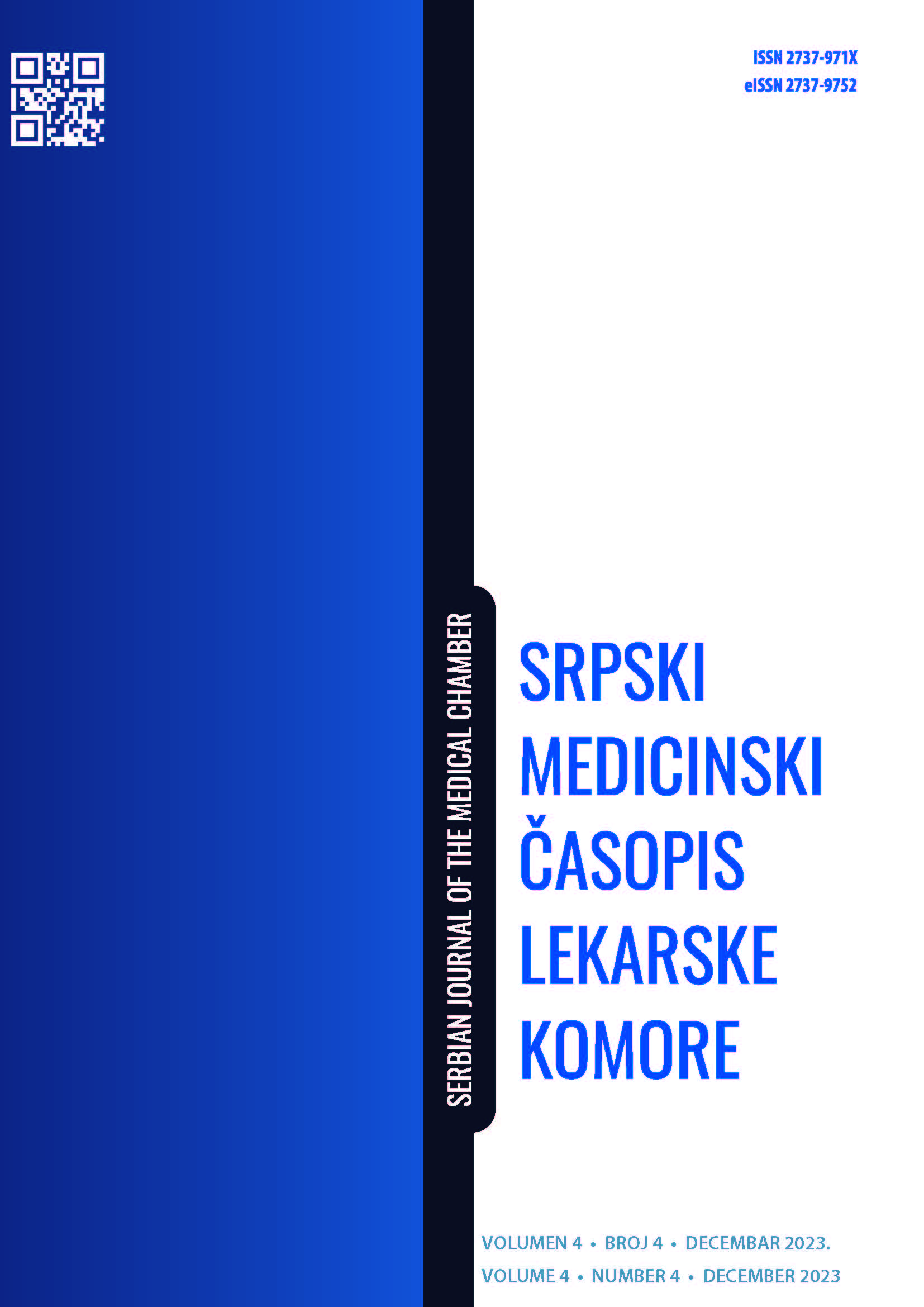FUNCTIONAL RESULTS IN THE TREATMENT OF PATIENTS WITH SOFT TISSUE INJURIES TO THE VOLAR ASPECT OF THE WRIST
Abstract
Introduction: The hand is a very important body part with complex anatomy. Important neurovascular structures are located in the hand. Many superficial injuries of the hand, which may at first glance appear harmless, are often associated with injuries to tendons, nerves, and blood vessels. This paper describes soft tissue injuries, while injuries to the bone have been excluded from the study.
Aim: The aim of this study is to present the functional outcome of the treatment of patients with soft tissue wounds to the volar aspect of the wrist.
Methods: A retrospective analysis of 20 patients treated at the Microsurgery Department of the Emergency Center in Belgrade was performed. We observed the following: gross grip strength (GGS) of the hand, range of motion, the two-point discrimination test (2PD), while the patients filled out the Disabilities of the Arm, Shoulder and Hand (DASH) questionnaire.
Results: In our study, the GGS of the injured hand was 80.9% of the strength of the uninjured hand. The mean range of motion of the wrist, as well as of the DIP, PIP, and MCP joints, ranged from 77.45% to 91.6%, as compared to the uninjured hand. An S3+ level of sensory recovery was achieved by 10% of patients. The average DASH score was 19.78.
Conclusion: Our study shows that proper and timely treatment is necessary for a good functional result in the treatment of these injuries.
References
Bošković MS. Anatomija čoveka. Med knjiga, Beograd-Zagreb. 1970; p. 108-10.
Karlsson S, Niechajev IA. Arterial anatomy of the upper extremity. Acta Radiol Diagn (Stockh). 1982;23(2):115-21. doi: 10.1177/028418518202300206.
Parry SW, Ward JW, Mathes SJ. Vascular anatomy of the upper extremity muscles. Plast Reconstr Surg. 1988 Mar;81(3):358-65. doi: 10.1097/00006534-198803000-00007.
Angermann P, Lohmann M. Injuries to the hand and wrist. A study of 50,272 injuries. J Hand Surg Br. 1993 Oct;18(5):642-4. doi: 10.1016/0266-7681(93)90024-a.
Puckett CL, Meyer VH. Results of treatment of extensive volar wrist lacerations: the spaghetti wrist. Plast Reconstr Surg. 1985 May;75(5):714-21. doi: 10.1097/00006534-198505000-00018.
Sharma P, Maffulli N. Biology of tendon injury: healing, modeling and remodeling. J Musculoskelet Neuronal Interact. 2006 Apr-Jun;6(2):181-90.
Bukhari AJ, Saleem M, Bhutta AR, Khan AZ, Abid KJ. Spaghetti wrist: management and outcome. J Coll Physicians Surg Pak. 2004 Oct;14(10):608-11. doi: 10.2004/JCPSP.608611.
Ogemdi I, Siddiq AIS, Temilolu O. Causes of hand injuries in a developing country. Can J Surg. 2010 Jun;53(3):161-6.
Strickland JW. Results of flexor tendon surgery in zone II. Hand Clin. 1985 Feb;1(1):167-79.
Stefanich RJ, Putnam MD, Peimer CA, Sherwin FS. Flexor tendon lacerations in zone V. J Hand Surg Am. 1992 Mar;17(2):284-91. doi: 10.1016/0363-5023(92)90407-g.
Chassard M, Pham E, Comtet JJ. Two-point discrimination tests versus functional sensory recovery in both median and ulnar nerve complete transections. J Hand Surg Br. 1993 Dec;18(6):790-6. doi: 10.1016/0266-7681(93)90247-d.
Paula MH, Barbosa RI, Marcolino AM, Elui VM, Rosén B, Fonseca MC. Early sensory re-education of the hand after peripheral nerve repair based on mirror therapy: a randomized controlled trial. Braz J Phys Ther. 2016 Jan-Feb;20(1):58-65. doi: 10.1590/bjpt-rbf.2014.0130.
Woo A, Bakri K, Moran SL. Management of ulnar nerve injuries. J Hand Surg Am. 2015 Jan;40(1):173-81. doi: 10.1016/j.jhsa.2014.04.038.

